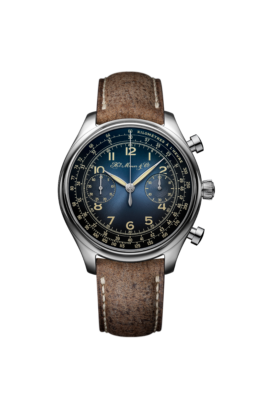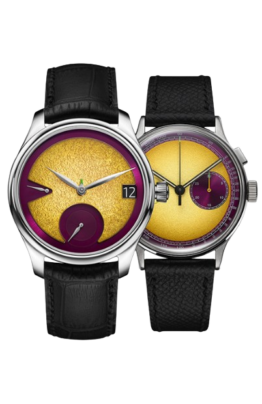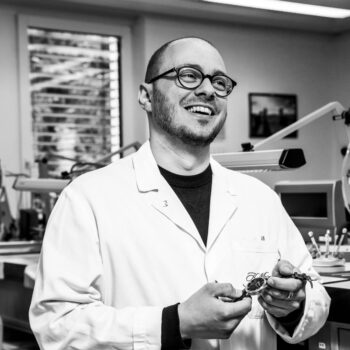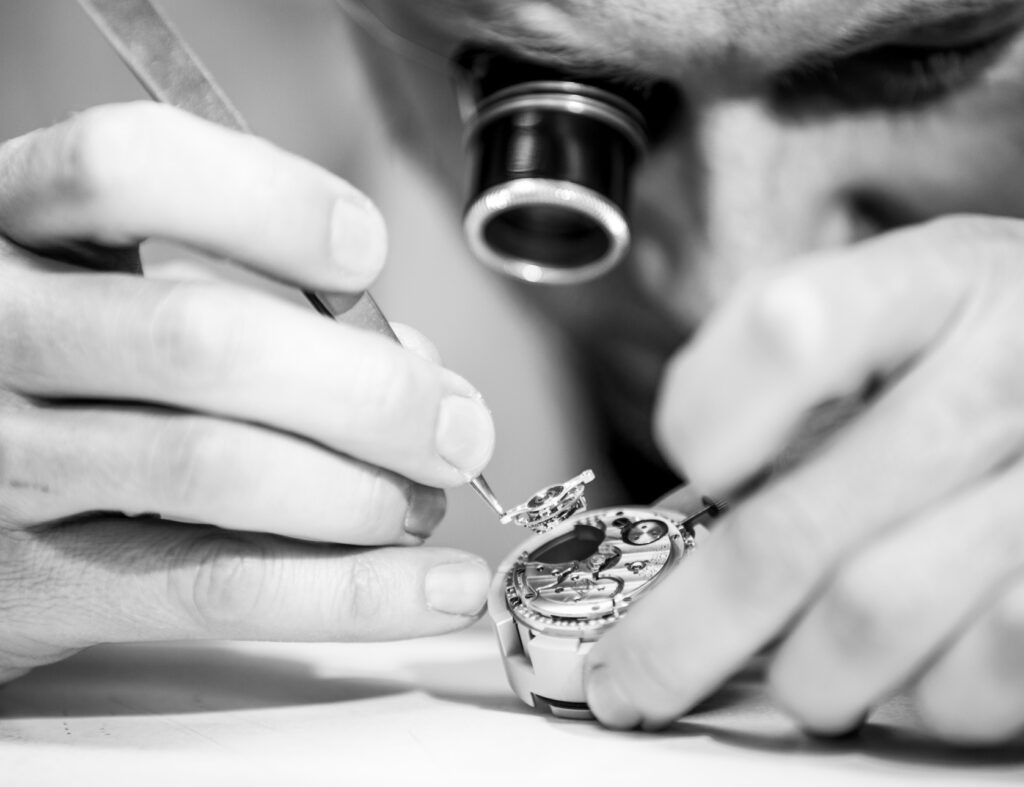Let’s get straight to the ‘very rare’– do all watch manufacturers make their springs in-house?
Very few companies do it… at Moser, everything is done in-house. There are probably around 60 people in the world who have mastered the technique. It’s very, very rare for one person to do all the work–here, there are two of us. We produce up to 800 spirals a day, for every type of watch– each calibre has its own particular springs, its own distribution of forces. It’s beautifully idiosyncratic.
And how did you learn this incredibly rare skill?
Before I came to Moser, I’d never made a hairspring myself! But I learned everything here, from the base material to the final spiral… pulling, cleaning, rolling, winding. When I arrived in 2014, an experienced spring-maker trained me for 18 months.
What makes you, or anyone, a masterful spring-maker?
You absolutely need good eyes. And patience. There’s a particular kind of sensitivity in the hand that’s hard to describe… it takes an understanding of very very fine tolerance, the need for absolute precision. Because this precision in the watchmaker is the secret to absolute precision in the watch.


Stephan Christ
Head of Hairspring production at H. Moser & Cie.
Your least favourite part of the process?
The hardest part is rolling– there’s a very low tolerance for error. You might finish and then have to start all over again!
And your favourite?
The winding of the springs. At this point, they’re put into a case, which you have to keep perfectly clean so as to not damage the wire. Not a single speck of dust is allowed to get in there!
What is a spring’s role within the watch?
The Hairspring is the beating heart of a watch movement, it is positioned right above the balance wheel. When the balance wheel begins to move, the spring’s job is to ensure that the balance swings back and forth at a constant frequency. The oscillations of the balance wheel regulate the flow of the time.
This mechanism was invented around 1675 by Christian Huygens, but there have been new designs and major improvements in the materials since then.
In 1931, Dr. Reinhard Straumann made one of the most important inventions in hairspring material called NIVAROX which improved the accuracy of the watch enormously.
The hairspring really is one of the most refined, precise components of a mechanical watch.
What would you like to invent?
For large-scale production, I think that the winding of the springs could be automated– especially threading them into the winding instrument.
If you had to choose your favourite Moser watch?
The Endeavour Tourbillon Concept… the Tourbillon itself is very delicate and beautiful. And, of course, the movement uses a double hairspring–which is very rare–designed and produced here. Both the double hairspring and the Tourbillon work to balance out the force of gravity. It’s an incredibly accurate watch. But I will always love my very first Moser– a Centre Seconds red gold with a blue fumé dial. It was a real lucky find, and it always makes me happy.











